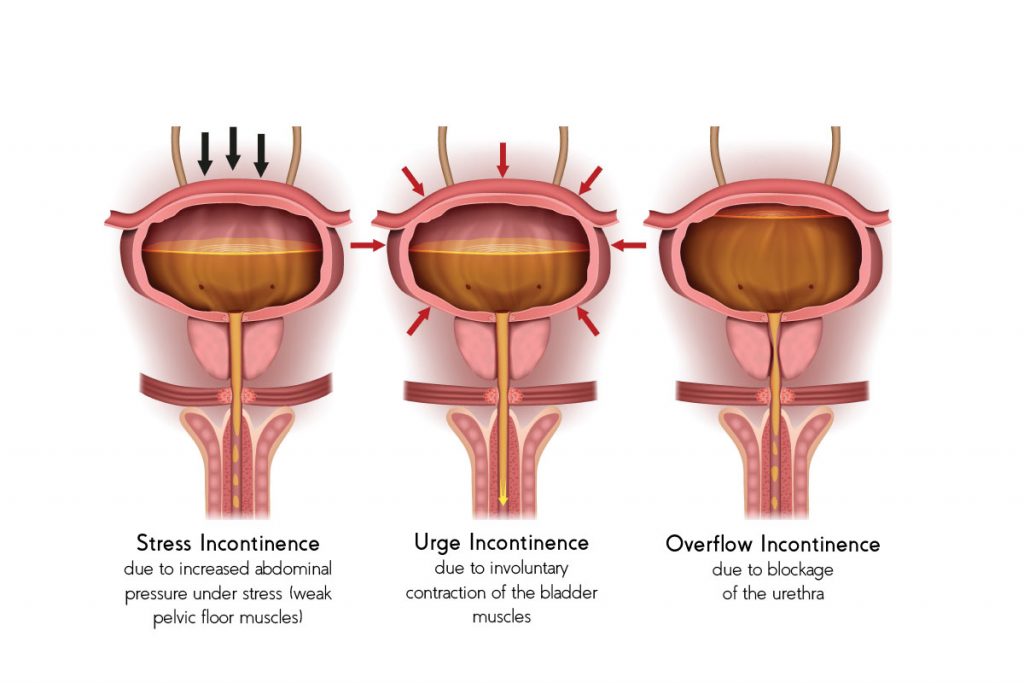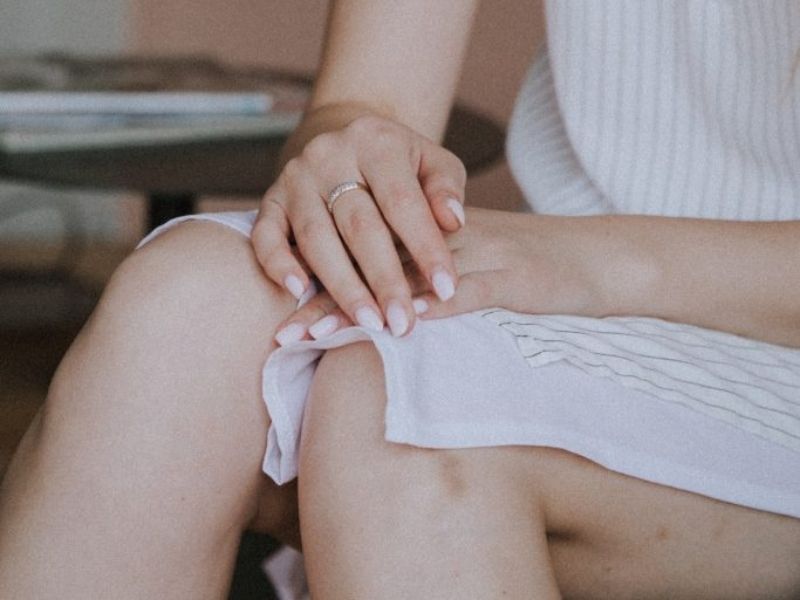Have you ever laughed or jumped up and down, only to have a little bit of urine leak from your body? If you have, this could be a sign of urinary incontinence. Women tend to joke about peeing a little when they sneeze after having kids, but their experience is real and they’re not alone. Urinary incontinence refers to the involuntary loss of urine, and it may occur in nearly half of all adult women.1
Though urinary incontinence is extremely common, it is underdiagnosed and undertreated.2 The lack of adequate interventions for women suffering from urinary continence is partly due to women refraining from sharing their incontinence symptoms with their healthcare providers because of embarrassment or misunderstandings about the nature of the condition or its treatment.3,4 If this is you, know that you’re not alone. The more women who speak up and educate about this condition, the less taboo or shameful it will become.
Understanding urinary incontinence and why it occurs may help to mitigate some of the embarrassment people feel if they experience incontinence. Recognizing that there are treatment options available that can improve the quality of life of those with urinary incontinence may help to motivate people to seek the care they need and deserve.
Although it may feel embarrassing when you are experiencing urinary incontinence, you don’t have to continue suffering. With the information below, you can learn about some of the types, factors, and treatments for urinary incontinence, and then you can use that information to feel empowered to take care of you and your pelvic floor health because you are worth it.
The Different Types of Incontinence
Incontinence comes in a few different forms, each categorized based on the causes and severity of symptoms. Studies estimate that at least 300 million people worldwide experience some form of incontinence, while around 50% of people who experience incontinence don’t seek the help that they deserve. Understanding is often the first step towards awareness and taking action.

- Urge incontinence. The sudden urge to urinate due to involuntary contraction of the bladder muscles, also known as an overactive bladder, but also experience leaking at inappropriate times.
- Stress incontinence. An increase in pressure is applied to the bladder due to weak pelvic floor muscles. This occurs with physical activities such as sneezing, laughing, coughing or heavy lifting.
- Overflow incontinence. The bladder is not able to empty completely due to a blockage of the urethra, and results in small amounts of urine leaking after using the bathroom (Known as dribbling).
Factors that increase the chances of experiencing urinary incontinence
If you’re one of those laugh-until-you-accidentally-pee-your-pants people, know that you are not alone, and that this is a normal, and often treatable experience. Laughing is great medicine for the soul, and we want you to continue to laugh without having to worry about urine leakage during a time of joy. There are certain factors that can increase your chances of experiencing incontinence, as well as possible solutions to relieve your struggle.
- Fluid intake. Drinking more than 2 liters of fluid each day can increase the risk for urinary incontinence.2 There are certain types of drinks that may increase incontinence, such as:
- Alcohol
- Caffeinated beverages
- Diet beverages
- Carbonated beverages.5
- Smoking. Tobacco use has been shown to increase the risk of urinary incontinence.2
- Pregnancy & Childbirth. Pregnancy can weaken the pelvic floor muscles due to the increased pressure.
- Aging. The likelihood of urinary incontinence increases with age, and up to 77% of elderly women who live in nursing homes experience urinary incontinence.6–11
- Medical conditions. Some medical conditions appear to contribute to urinary incontinence. These conditions include:
- Obesity
- Dementia
- Constipation
- Sleep apnea.2
- Certain medications. Some medications enhance the likelihood of urinary incontinence. The timing of these medications, such as diuretics, can sometimes prevent incontinence symptoms.2
Why and how to address urinary incontinence
Though we may primarily think of urinary incontinence as an inconvenient nuisance that may cause shame or embarrassment, it is also associated with certain health risks. It is associated with depression, sleep disturbances, falls, fractures, and urinary tract infections.12–14 Older women who suffer from lower urinary tract symptoms like urinary incontinence are up to 2.3 times more likely to fall.14 So it’s important that you prioritize yourself and your health, and seek the care that you deserve when you are experiencing any of these issues.
Once a healthcare provider has confirmed that you suffer from urinary incontinence, there are several ways you can work together to treat your condition. These approaches include:
- Lifestyle modifications. Addressing lifestyle factors that could potentially contribute to urinary incontinence may help you to reduce the severity of your symptoms.2,5
- Exercises. Pelvic floor exercises may be an effective way to combat mild urinary incontinence.15–20
- Procedures. Procedures that may be undertaken to treat urinary incontinence include surgery, nerve stimulation techniques, and neuromodulation (alteration of nerve activity through targeted delivery of stimulus – electrical stimulation or chemical agent).2
There are also products available to non-invasively treat incontinence. The INNOVO Urinary Incontinence Kit—cleared by the FDA—is a pair of “smart shorts” designed to strengthen your pelvic floor muscles from the inside out. Using the kit, you perform 180 perfect Kegels in 30 minutes. A clinical study guided by the FDA had amazing results: 87% of women were defined as dry after just 12 weeks, and 90% of users would recommend the therapy to others. Subscribe to the INNOVO newsletter to receive a $20 discount code for your purchase!
Takeaway
Urinary incontinence is common among millions of women around the globe, but too many women who experience incontinence do not seek the care they need and deserve and more importantly get the treatment they need. It’s important to recognize that there are physiological reasons that incontinence happens and that the implications extend beyond its inconvenience. It can pose other health risks to those who suffer from it, so it’s important to work towards a solution. Given the many treatment options available you and your healthcare provider should strive to address your incontinence because you deserve to live your fullest life without unnecessary suffering.




















